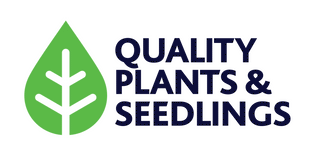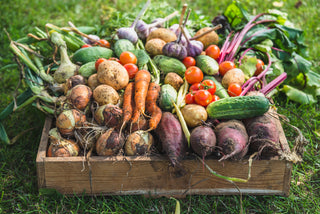Growth Terms
-
Photosynthesis: The process by which plants use sunlight, water, and carbon dioxide to produce oxygen and energy in the form of glucose.
-
Germination: The process where a seed begins to sprout and grow into a seedling. Influenced by water, temperature, and light.
-
Transpiration: The process of water movement through a plant and evaporation from aerial parts like leaves, stems, and flowers.
-
Vigour: A plant’s overall health and capacity for growth under optimal conditions.
-
Chlorosis: Yellowing of plant leaves due to lack of chlorophyll, often caused by nutrient deficiencies, poor drainage, or disease.
-
Meristem: Plant tissue that remains capable of growth and differentiation; located at tips of roots and shoots for continual growth.
-
Turgor Pressure: Pressure of water inside the plant cell walls that keeps the plant rigid and upright.
-
Node: The part of a plant stem where leaves, branches, or flowers grow, and where growth can be measured.
-
Adventitious Roots: Roots that grow from non-root tissues, often in response to stress or for added support.
Disease Terms
-
Pathogen: A disease-causing organism, including fungi, bacteria, viruses, and nematodes, that can infect plants.
-
Blight: A general term for rapid and complete plant death caused by a pathogen, often seen in leaves, stems, or flowers.
-
Wilt: A condition where leaves droop or collapse due to water loss, poor nutrient uptake, or root disease.
-
Mildew: Fungal growth on plants, typically white or grey, affecting leaves and stems. Common types include powdery mildew and downy mildew.
-
Rot: Decomposition of plant tissues due to fungal or bacterial infection. Types include root rot, stem rot, and crown rot.
-
Necrosis: Death of plant tissue, often appearing as brown or black spots on leaves or stems, due to disease or stress.
-
Canker: A localized dead area on the bark or stems of plants, usually caused by fungal or bacterial infections.
-
Leaf Spot: Localized dead tissue on leaves, usually circular spots caused by fungi or bacteria.
-
Damping Off: A fungal disease that affects seedlings, causing them to collapse and die soon after germination.
Virus and Pest Terms
-
Virus: A submicroscopic pathogen that can infect plants, causing symptoms like mottling, curling, and stunted growth.
-
Mosaic Virus: A viral disease that causes mottled or patchy discoloration on leaves, reducing plant health and yield.
-
Viral Vector: An organism, often an insect like aphids or whiteflies, that transmits plant viruses from one plant to another.
-
Inoculation: The introduction of a pathogen or virus into a plant, often referring to virus transmission or purposeful introduction for resistance studies.
-
Gall: An abnormal growth on plant tissues, often caused by insects, bacteria, fungi, or nematodes.
-
Systemic Infection: When a virus or pathogen spreads throughout the entire plant, affecting growth, yield, and health across all parts.
-
Vector: An organism that carries and spreads disease-causing pathogens. Examples include insects, mites, and nematodes.
-
Mycoplasma: A group of bacteria-like organisms that cause diseases in plants, often spread by insect vectors.
Preventive and Treatment Terms
-
Fungicide: A chemical or biological substance used to kill or inhibit fungal pathogens.
-
Bactericide: A chemical substance used to kill or control bacterial pathogens.
-
Biocontrol: The use of natural predators or parasites to control pests and diseases in plants.
-
Resistant Variety: A plant variety bred or genetically modified to resist specific pathogens, pests, or environmental conditions.
-
Sanitation: Practices used to prevent the spread of diseases and pests, including removing infected plant material and disinfecting tools.
-
Quarantine: The isolation of infected plants or crops to prevent the spread of diseases to healthy plants.
-
IPM (Integrated Pest Management): A holistic approach to controlling pests and diseases using a combination of biological, cultural, mechanical, and chemical strategies.
| Term | Description |
|---|---|
| Photosynthesis 🌞 | Plants use sunlight, water, and CO2 to produce energy. |
| Germination 🌱 | The process by which a seed sprouts and begins to grow. |
| Transpiration 💧 | Water movement through plants and evaporation. |
| Vigour 💪 | Overall health and strong growth under optimal conditions. |
| Chlorosis 🍂 | Yellowing of leaves due to nutrient deficiency or disease. |
| Meristem 🌿 | Plant tissue capable of growth at tips of roots and shoots. |
| Turgor Pressure 🚰 | Water pressure inside cells keeping plants rigid and upright. |
| Node 🌳 | Where leaves or branches grow on the plant stem. |
| Adventitious Roots 🌾 | Roots that form from non-root tissue, often in response to stress. |
| Pathogen 🦠 | Microorganism that causes diseases in plants. |
| Blight ⚠️ | Rapid death of plant tissue caused by a pathogen. |
| Wilt 😓 | Drooping leaves caused by water stress or root issues. |
| Mildew 🍄 | Fungal growth on leaves and stems, often grey or white. |
| Rot 🪦 | Decomposition of plant tissue caused by bacteria or fungi. |
| Necrosis 💀 | Dead patches of plant tissue, often caused by disease. |
| Canker 🔪 | Localised dead area on bark or stems, often fungal. |
| Leaf Spot 🍃 | Small, discolored spots on leaves caused by fungi or bacteria. |
| Damping Off 🛑 | A fungal disease that causes seedlings to collapse and die. |
| Virus 🦠 | Submicroscopic pathogen that causes plant diseases. |
| Mosaic Virus 🟡 | A virus that causes mottled or patchy leaf discoloration. |
| Viral Vector 🐞 | Insect or organism that carries viruses between plants. |
| Inoculation 💉 | Introducing a pathogen or virus into a plant. |
| Gall ⚡ | Abnormal plant tissue growth caused by insects or fungi. |
| Systemic Infection 🧬 | Disease that spreads throughout the entire plant system. |
| Vector 🦗 | Organism like insects that spread plant diseases. |
| Mycoplasma 🧫 | Bacteria-like organisms causing plant diseases, spread by insects. |
| Fungicide 🧪 | Chemical or biological treatment used to kill fungi. |
| Bactericide 🧫 | Chemical treatment used to control bacterial infections. |
| Biocontrol 🐛 | Use of natural predators to control pests and diseases. |
| Resistant Variety 🛡️ | A plant variety bred to resist specific diseases or pests. |
| Sanitation 🧽 | Preventing disease by cleaning tools and removing infected plants. |
| Quarantine 🚧 | Isolating infected plants to prevent spreading diseases. |
| IPM 🛠️ | A comprehensive approach using multiple methods to manage pests. |




